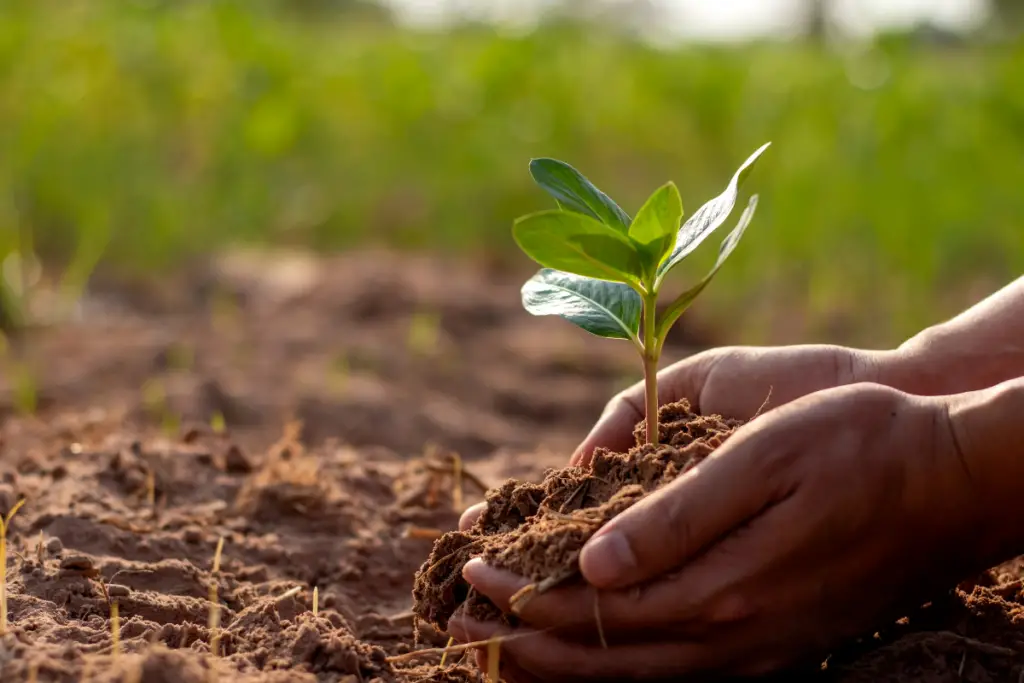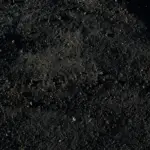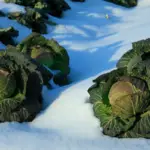Peat soil is a type of soil that is formed over time through a natural process. It is a valuable resource that is used in agriculture, horticulture, and other industries.
Peat soil is known for its ability to retain moisture and nutrients, making it an ideal growing medium for plants. But how is peat soil formed?
Peat soil is formed through the accumulation of organic matter in wetland environments.
As plants die, their remains are broken down by bacteria and other microorganisms. However, in wetland environments, the decomposition process is slowed down due to the lack of oxygen.
This leads to the accumulation of partially decomposed organic matter, which eventually becomes peat soil.
The formation of peat soil is a slow process that can take thousands of years. It requires specific environmental conditions, such as high levels of moisture and low levels of oxygen.
The type of vegetation that grows in the wetland environment also plays a role in the formation of peat soil. For example, sphagnum mosses are commonly found in peatlands and are a major contributor to the formation of peat soil.
Understanding how peat soil is formed is important for its sustainable use and management.

Table of Contents
Peat Soil Fundamentals
Definition of Peat Soil
Peat soil is a type of soil that is formed over thousands of years from partially decomposed organic materials, such as sphagnum moss, reeds, and other vegetation.
It is found in peatlands, which are also known as bogs or mires. Peatlands cover about 3% of the earth’s land mass and are found in both temperate and tropical regions.
Peat soil is characterized by its high water table, absence of oxygen, reducing conditions, low bulk density and bearing capacity, soft spongy substratum, low fertility, and high acidity.
It is known as one of the most problematic soils in the fields of civil and environmental engineering.
Basic Ingredients of Peat Soil
Peat soil is composed of various organic and inorganic materials. The organic materials are derived from plant remains, while the inorganic materials are derived from minerals and rocks.
The following table summarizes the basic ingredients of peat soil:
| Organic Materials | Inorganic Materials |
|---|---|
| Sphagnum moss | Silica |
| Reeds | Aluminum |
| Other vegetation | Iron |
| Calcium | |
| Magnesium |
Peat soil is formed when organic materials accumulate in an environment with high moisture and low oxygen levels.
The process of peat formation is slow and can take thousands of years.
As the organic materials accumulate, they are partially decomposed by microorganisms under anaerobic conditions. The resulting material is called peat.
Formation Process of Peat Soil
Peat soil is formed through a complex process that takes place over a long period of time.
The process involves the accumulation of plant material, waterlogging, and decomposition and compression.
Initial Stage: Plant Material Accumulation
The initial stage of peat soil formation involves the accumulation of plant material.
This usually happens in areas with high rainfall or standing water such as lakes or the margins of slow-flowing rivers.
As a result, partially decomposed plant remains accumulate and become compacted, forming peat.
The plant material that accumulates to form peat soil is usually made up of mosses, sedges, and other plants that thrive in wet environments.
These plants have a high content of lignin and cellulose, which are resistant to decay. As a result, the plant material accumulates over time, forming a layer of peat.
Middle Stage: Waterlogging
The middle stage of peat soil formation is characterized by waterlogging. The accumulation of plant material creates a layer that impedes water drainage, leading to waterlogging.
This creates an environment that is low in oxygen, which slows down the decomposition process.
The waterlogging stage is critical in the formation of peat soil because it creates the conditions necessary for the accumulation of plant material.
The waterlogged environment also helps to preserve the plant material by slowing down the decomposition process.
Final Stage: Decomposition and Compression
The final stage of peat soil formation involves decomposition and compression. Over time, the plant material that has accumulated in the waterlogged environment begins to decompose.
Bacteria and fungi break down the plant material, releasing carbon dioxide and other gases.
As the plant material decomposes, the layer of peat becomes more compacted. The weight of the accumulating peat compresses the underlying layers, leading to the formation of peat soil.
The compression process also causes the water to be squeezed out of the peat, making it even more resistant to decomposition.
- 🌴【Coco Coir Brick】: Made of 100% natural organic coconut coir, which extracted from the husk on the outer shell of a coconut, low EC and suitable pH can provide a healthy growing environment for most flowers and plants, so it can cultivate flowers and economical plant products without soil, and can also cultivate seedlings
Prices pulled from the Amazon Product Advertising API on:
Product prices and availability are accurate as of the date/time indicated and are subject to change. Any price and availability information displayed on [relevant Amazon Site(s), as applicable] at the time of purchase will apply to the purchase of this product.
Factors Influencing Peat Soil Formation
Peat soil is formed by the accumulation of partially decomposed plant material under specific environmental conditions.
These conditions are influenced by a number of factors, including climatic conditions, vegetation type, and geographical location.
Climatic Conditions
Climatic conditions play a crucial role in the formation of peat soil. Peat soil is typically found in areas with high rainfall and a cool, wet climate.
The cool climate slows down the decomposition of organic material, while the high rainfall helps to create waterlogged conditions that prevent the complete decay of plant material.
The accumulation of partially decomposed plant material over time leads to the formation of peat soil.
Vegetation Type
The type of vegetation growing in an area also influences the formation of peat soil.
Peat soil is typically formed from the remains of bog plants, such as sphagnum mosses, sedges, and heather.
These plants are adapted to growing in waterlogged conditions and are slow to decompose, which makes them ideal for the formation of peat soil.
Geographical Location
The geographical location of an area can also influence the formation of peat soil.
Peat soil is typically found in areas with low topography, such as valleys and depressions, where water can accumulate and create waterlogged conditions.
In addition, peat soil is often found in areas with low nutrient availability, such as acidic soils, which further slows down the decomposition of organic material.
Importance of Peat Soil
Peat soil is a type of soil that is formed from partially decomposed organic matter. It is an important natural resource that has a variety of uses.
In this section, we will discuss the agricultural significance and environmental impact of peat soil.
Agricultural Significance
Peat soil is an important soil amendment for potting soil. It has several benefits that make it a useful addition to organic soil mixes.
Firstly, it can prevent compaction in soil. This means that it can increase aeration in the soil and allow plants’ roots room to breathe.
Secondly, peat soil is pathogen-free. Unlike untreated compost, peat soil is a good option for seed starting and growing plants.
Thirdly, peat soil has excellent water retention properties. It can retain water and nutrients in the soil, which can help plants grow better.
Peat soil is also used in agriculture as a source of nutrients for crops. It contains high levels of nitrogen, phosphorus, and potassium, which are essential for plant growth.
Peat soil is also used as a soil conditioner, helping to improve soil structure and fertility. It can help to increase soil pH levels, which is important for certain types of crops.
Environmental Impact
Peat soil plays an important role in the environment. It is a natural carbon sink, meaning that it absorbs carbon dioxide from the atmosphere.
Peat soil contains large amounts of carbon, which is stored in the soil. When peat soil is disturbed or burned, this carbon is released into the atmosphere, contributing to climate change.
Peat soil is also an important habitat for a variety of plant and animal species. It provides a home for many rare and endangered species, including birds, insects, and mammals.
Peat soil is also an important source of water. It helps to regulate water flow and store water, which can help to prevent flooding and drought.
However, the extraction of peat soil can have negative environmental impacts. Peat soil extraction can destroy habitats and release carbon into the atmosphere.
It can also lead to soil erosion and loss of biodiversity. In addition, peat soil extraction can have a negative impact on water quality, as it can lead to the release of pollutants into waterways.
Conclusion
In conclusion, peat soil is a unique type of soil that is formed through a slow and complex process.
It is primarily composed of partially decomposed plant material that has accumulated over thousands of years in waterlogged environments.
This type of soil is particularly important because it serves as a natural carbon sink, storing large amounts of carbon and helping to mitigate climate change.
Peat soil is also an important resource for human use, serving as a fuel source and a valuable horticultural material. However, it is important to manage peatlands sustainably to prevent their degradation and ensure their continued ecological and economic benefits.
By understanding how peat soil is formed and the important role it plays in our environment, we can work towards protecting and preserving this valuable resource for future generations.
- How to Dry Basil Leaves: A Professional Guide
- Is an Avocado a Fruit or Vegetable? Simple Answer and Explanation
- Does Pineapple Have Seeds? Exploring the Anatomy of Pineapples
- Blooming Through Winter: Can I Grow Vegetables Indoors in the Winter?
- What Can You Grow in a Greenhouse All Year Round: A Guide to Year-Round Greenhouse Gardening
- Are Blueberries Blue? Debunking the Myth of Their Color

















